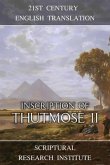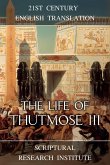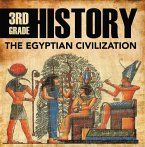The life of Harkhuf is one of the better-documented lives from the era of the Old Kingdom era of Egyptian history. Harkhuf lived during the reigns of kings Merenre I and Pepi II of the 6th Dynasty, at the same time as the more famous Weni, whom he may have mentioned in his autobiography. Like Weni, he is primarily known from the inscriptions on his tomb, however, unlike Weni, he only seems to have had one tomb. On the front of his tomb were carved two inscriptions, one promising to intercede in the afterlife for those who prayed for him at his tomb, and the other was his autobiography, telling of his three expeditions into Nubia for King Merenre I. This appears to have been the original design of the tomb, as the front of the tomb was completely covered in the two inscriptions, however, like Weni, he later had more to add. Unlike Weni, Harkhuf did not build a second tomb, instead, he had one side of the tomb smoothed off so a letter to him from King Pepi II could be inscribed there, providing more information about the world he lived in.
Harkhuf lived during the 6th Dynasty of the Old Kingdom, which would have been at the peak of the Old Kingdom's international reach, but after the major pyramid-building feats of the 5th Dynasty were completed. Egypt had already built the tallest building in the world around a century before Harkhuf's expeditions into Nubia, which would continue to be the tallest building in the world for thousands of years, until the completion of the Eiffel Tower in 1889. As Merenre I is only believed to have ruled for around 9 years, Harkhuf and Weni had to be active in Nubia at the same time. Weni's Autobiography includes two lists of Nubian tribes, first a list of five tribes that fought in Canaan with the Egyptian army, and later a list of four tribes when he went to Nubia to dig five canals to open the region to trade via Egyptian barges.
Nubia was the land to the south of Egypt, was Aswan and Elephantine at the First Cataract of the Nile. Elephantine, under its older Egyptian name Abu was mentioned as one of the mines that Weni visited, however, was considered Egyptian during the Old Kingdom, and marked the boundary between the two cultures. As only four of the five Nubian tribes that Weni mentioned are mentioned by Harkhuf, it allows both their routes through Nubia to be compared and tracked, establishing where the Nubian settlements were probably located.
Harkhuf lived during the 6th Dynasty of the Old Kingdom, which would have been at the peak of the Old Kingdom's international reach, but after the major pyramid-building feats of the 5th Dynasty were completed. Egypt had already built the tallest building in the world around a century before Harkhuf's expeditions into Nubia, which would continue to be the tallest building in the world for thousands of years, until the completion of the Eiffel Tower in 1889. As Merenre I is only believed to have ruled for around 9 years, Harkhuf and Weni had to be active in Nubia at the same time. Weni's Autobiography includes two lists of Nubian tribes, first a list of five tribes that fought in Canaan with the Egyptian army, and later a list of four tribes when he went to Nubia to dig five canals to open the region to trade via Egyptian barges.
Nubia was the land to the south of Egypt, was Aswan and Elephantine at the First Cataract of the Nile. Elephantine, under its older Egyptian name Abu was mentioned as one of the mines that Weni visited, however, was considered Egyptian during the Old Kingdom, and marked the boundary between the two cultures. As only four of the five Nubian tribes that Weni mentioned are mentioned by Harkhuf, it allows both their routes through Nubia to be compared and tracked, establishing where the Nubian settlements were probably located.
Dieser Download kann aus rechtlichen Gründen nur mit Rechnungsadresse in A, D ausgeliefert werden.









